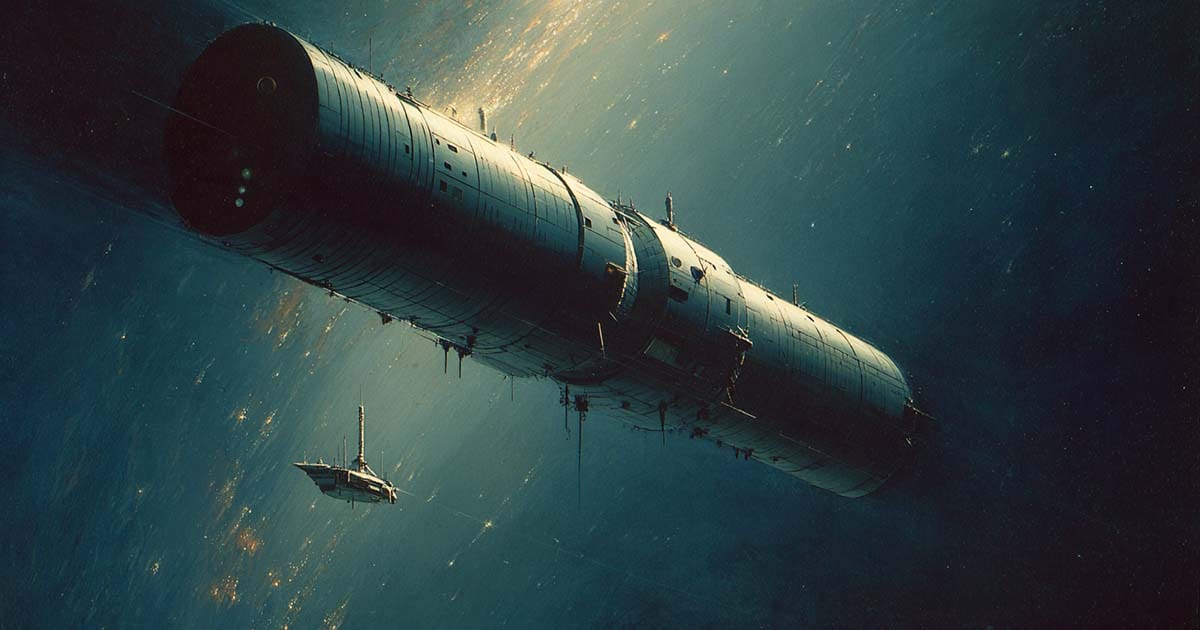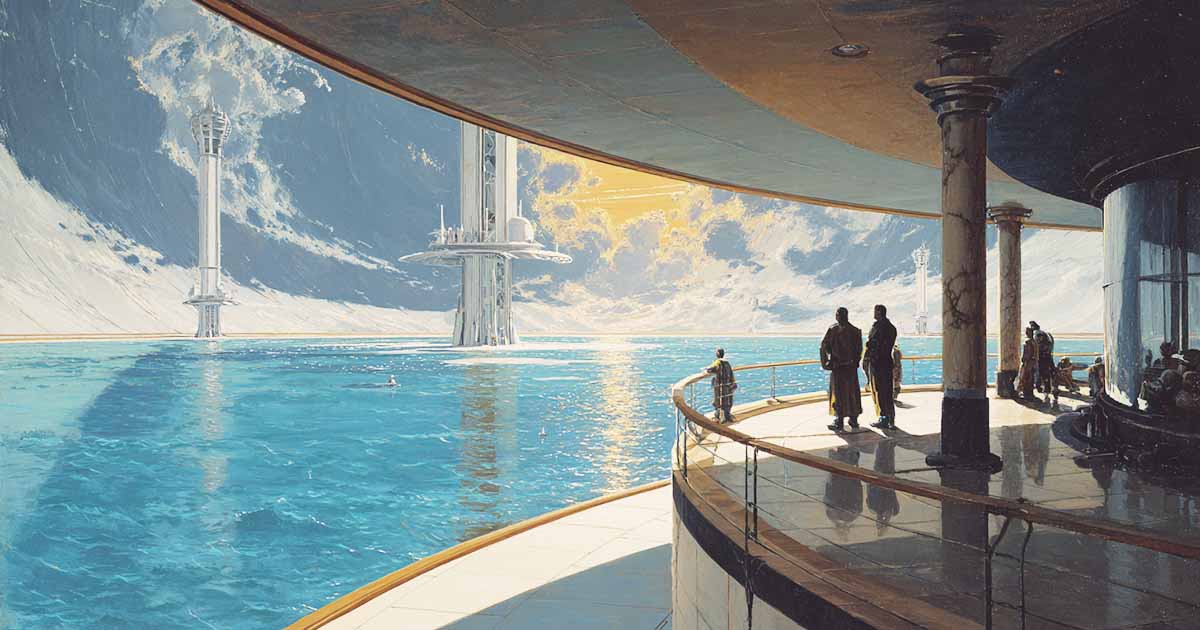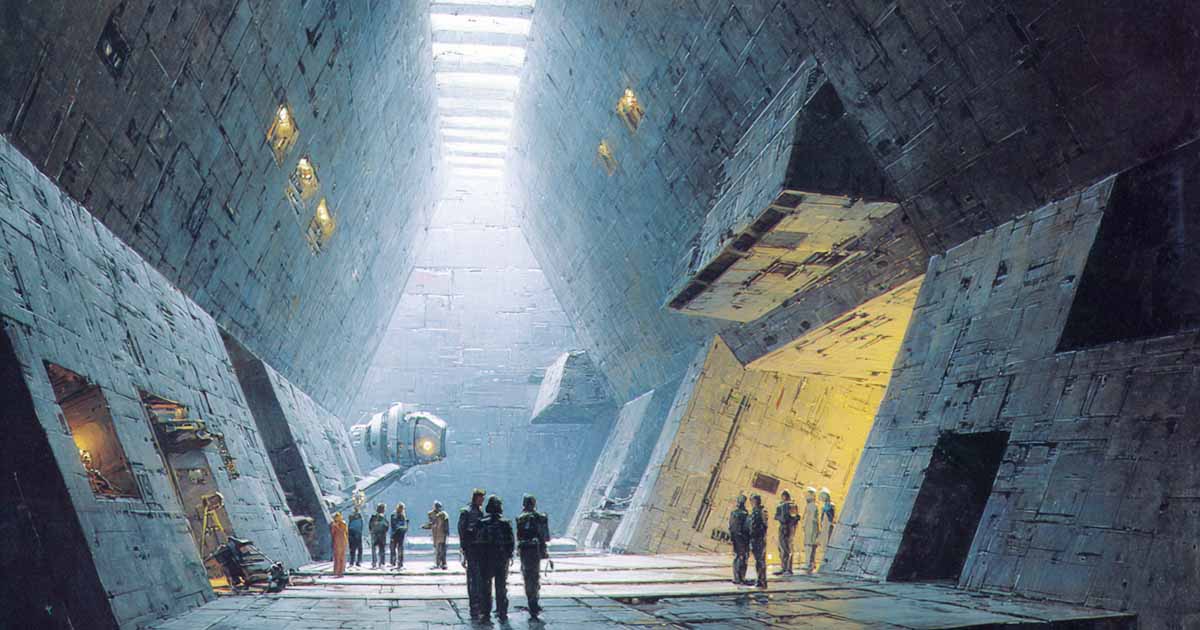Rendezvous with Rama Honors the Power of Discovery
Arthur C. Clarke’s “Rendezvous with Rama” remains a landmark of hard science fiction, blending precision and wonder in a story that celebrates humanity’s quiet courage before the unknown.

Arthur C. Clarke published “Rendezvous with Rama” in 1973, at a time when the dust of the Apollo program had barely settled and humanity still looked toward the stars with confidence. His reputation was already secure through “2001: A Space Odyssey,” yet this new novel showed a more mature and disciplined side of his imagination. Clarke offered readers a story that favored precision over drama and wonder over sentiment.
The book quickly earned its place in the canon of serious science fiction. It won the Hugo, Nebula, and John W. Campbell Memorial awards, an achievement few novels have matched. Critics praised its technical accuracy and the quiet majesty of its vision. Readers sensed that Clarke had written not only about an alien encounter but about the human spirit in the face of immensity.
“Rendezvous with Rama” arrived when the genre itself was changing. The speculative optimism of the 1950s had given way to a mood of reflection. Clarke reminded his readers that curiosity, not conquest, was the real heart of exploration. His novel does not ask what man can take from the stars but what the stars might teach him about himself.
His method was calm and exacting, yet the result was a work that stirred the imagination of an entire generation. The novel remains a lesson in how precision can produce wonder.
A World Awakened by the Unknown
The premise of “Rendezvous with Rama” is simple yet unforgettable. Humanity detects a massive object entering the Solar System and sends an expedition to study it before it disappears into the dark again. Clarke builds this discovery with an engineer’s patience, describing the data, the orbits, and the gradual realization that the visitor is artificial. There is no fanfare, only the quiet recognition that something extraordinary has arrived.
The atmosphere of the novel is not one of terror but of disciplined curiosity. Clarke writes as though the reader is part of the scientific team, weighing each new fact and resisting speculation. The pacing is deliberate and confident, matching the calm professionalism of the explorers. This steady tone gives the book its strength, allowing the mystery to grow without resorting to hysteria or sentimentality.
What makes Clarke’s vision so compelling is his respect for scale. The size and design of the alien object, though described in practical terms, inspire awe. Each measurement becomes a kind of poetry. The vastness of the structure reflects the vastness of the unknown itself. Clarke turns engineering data into reverence, showing how exact knowledge can still lead to wonder.
Throughout these early chapters, the suspense comes not from danger but from discovery. The reader senses that every door opened, every corridor explored, is a step deeper into mystery. Clarke keeps the focus on observation rather than confrontation. The excitement comes from knowing that something greater than human understanding is quietly unfolding before the eyes of reason.

The Craft of the Engineer-Storyteller
Arthur C. Clarke writes with the precision of a draftsman and the restraint of a scientist. His sentences move cleanly, without wasted motion, like the instruments he so often describes. There is no excess emotion or flourish in his language. He prefers clear lines and functional design, trusting the reader to find beauty in the accuracy itself.
His storytelling follows the same discipline. Each event unfolds in logical order, shaped by the natural behavior of machines and men working within physical law. Clarke’s heroes are not rebels or prophets but professionals. They work within the limits of their training and their technology, and through that discipline, they achieve dignity. This practical realism gives the book its steady pulse and separates it from more fanciful tales of outer space.
At the same time, Clarke’s prose carries a quiet reverence for creation. He never preaches, yet his fascination with structure and harmony suggests belief in a larger order. The turning of planets, the symmetry of an orbit, the design of an artificial world—these are not just technical curiosities. They are expressions of pattern and purpose that echo the language of faith. The novel’s calm tone hides a sense of worship at the altar of the cosmos.
“Rendezvous with Rama” also reflects the spirit of mid-century engineering culture. Its characters act with competence, modesty, and teamwork, the same qualities that built spacecraft and bridges in the real world. Clarke’s own background in radar and communications technology informs every detail. When his explorers measure gravity, cross unknown landscapes, or test alien machinery, the reader can almost hear the click of instruments and the hum of electric current.
Clarke’s approach rejects melodrama but achieves its own form of tension. The excitement lies in process—the careful testing of ideas against the universe’s indifference. Each discovery adds another piece to a puzzle that may never be solved. By the end of the novel, the reader realizes that the real story is not about conquest or danger. It is about observation as an act of faith, and about reason as the truest form of courage.
Humanity and the Infinite
At the heart of “Rendezvous with Rama” is Clarke’s vision of humility before the vastness of creation. His explorers are capable men guided by training and courage, yet they stand small against what they find. The story reminds the reader that humanity’s greatest strength is not power but awareness. Clarke shows that the proper response to the unknown is not fear but reverence.
The theme of human insignificance runs quietly through the novel. Clarke does not mock mankind’s limits. He measures them with calm respect. His explorers are not grand heroes or martyrs. They do their duty and follow procedure, and through that order, they reveal the best of human nature. The universe stays silent, yet the dignity of those who face it becomes a kind of answer.
Clarke’s treatment of discovery reflects the old frontier spirit that values courage without arrogance. His explorers approach the alien with the respect a surveyor might show a vast mountain range. They do not expect to master it, only to understand it. This humility turns scientific investigation into something moral. Curiosity becomes a kind of prayer, an honest response to the mystery of design.
The absence of conflict or villainy gives the novel its quiet strength. There are no enemies, only limits to knowledge. The tension comes from man’s effort to interpret what he sees and to accept that not every question will find an answer. Clarke’s restraint shows his confidence in both reason and imagination. He trusts his readers to find meaning in silence and to understand that wonder can exist without explanation.
Beneath the technical detail runs a steady faith in order and purpose. Clarke’s universe is vast and indifferent, yet it is also beautifully made. The more his explorers learn, the more they sense that they are touching something intentional. The story suggests that knowledge, pursued with honesty, can lead not to pride but to gratitude. It leaves the reader thoughtful and quietly inspired.

Legacy of the Silent Giant
“Rendezvous with Rama” endures as one of the most respected achievements of modern science fiction. Its influence can be traced across the decades in books, films, and games that borrow its idea of the vast and silent artifact drifting through space. Writers and filmmakers have returned to Clarke’s blueprint again and again. The appeal lies in the disciplined awe that defines the story, a balance of precision and mystery that few have matched.
The novel continues to stand apart because it trusts the reader’s imagination. Clarke never tells the reader what to feel or believe. He simply presents the mystery with clarity and lets the mind wander into the distance. The absence of sentiment allows the grandeur to speak for itself. That quiet confidence is what gives the book its lasting power.
Some readers wish for more emotion or deeper portraits of its characters. Clarke’s interest was not in individual psychology but in mankind’s shared encounter with the unknown. The men in his story are steady, professional, and respectful. They represent the kind of faith that relies on reason and order. This spirit, more than any single event in the plot, explains why the novel has not faded with time.
The idea at the heart of “Rendezvous with Rama” remains both humbling and uplifting. It reminds us that discovery does not always lead to conquest. Sometimes it leads only to understanding, and that is enough. Clarke’s vision of quiet awe carries a moral weight that feels stronger today than when he first wrote it. His story does not promise victory. It promises perspective.
When the book ends, the reader is left with a feeling of peace and distance, as if standing on a high plateau watching the stars turn. Clarke’s calm certainty that knowledge is sacred gives the novel a timeless grace. “Rendezvous with Rama” remains a silent giant of the genre, a work that speaks softly but stays in the mind long after the last page is turned.

